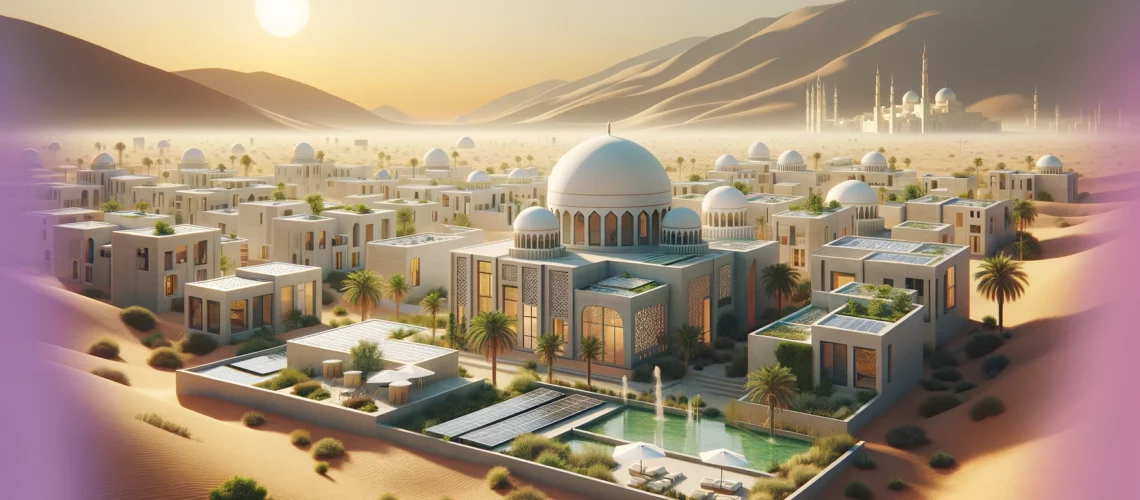In the world of real estate development, the concept of sustainability is gaining unprecedented momentum. Today’s developers face the challenge of integrating environmental responsibility into their growth strategies, ensuring that the expansion of urban landscapes aligns with ecological preservation. This approach is not only about adhering to regulations but also about recognizing the long-term benefits of sustainable development.
The Shift Towards Green Building
The real estate sector is increasingly moving towards green building practices. This shift involves the use of eco-friendly materials, energy-efficient designs, and incorporation of renewable energy sources. Green buildings reduce the carbon footprint, conserve resources, and provide healthier living spaces. Developers who adopt these practices are not only contributing to environmental protection but are also meeting the growing demand for sustainable living options.
Innovative Technologies in Sustainable Development
Emerging technologies play a crucial role in sustainable real estate development. Innovations like smart building systems, solar power technology, and water recycling methods are transforming how buildings are constructed and operated. These technologies make buildings more energy-efficient, reduce waste, and minimize environmental impact.
The Role of Government Policies and Incentives
Government policies and incentives are pivotal in promoting sustainable development in real estate. Many governments offer tax benefits, subsidies, and support for green building initiatives. These policies encourage developers to invest in sustainable practices and help offset the initial costs associated with green construction.
Sourabh Chandrakar’s Sustainable Approach
A notable example in this context is Sourabh Chandrakar, who has integrated sustainable practices into his real estate projects. His focus on incorporating energy-efficient designs and eco-friendly materials showcases how environmental responsibility can be seamlessly blended with real estate development.
Economic Benefits of Sustainable Real Estate
Contrary to the belief that sustainable practices are cost-prohibitive, they can actually lead to significant economic benefits. Energy-efficient buildings incur lower operating costs, attract higher occupancy rates, and often command premium prices. Moreover, sustainable properties are increasingly preferred by investors and tenants, making them a lucrative choice for developers.
Addressing Urban Sprawl with Sustainable Urban Planning
Sustainable urban planning is essential in addressing the challenges of urban sprawl. This involves creating compact, well-connected urban areas with mixed-use developments that reduce the need for long commutes, thereby lowering pollution levels. Thoughtful urban planning can lead to more efficient use of land and resources, making cities more livable and environmentally friendly.
Community Involvement and Education
Engaging communities in sustainable practices is crucial for the success of green real estate projects. Educating residents and stakeholders about the benefits of sustainability fosters a sense of responsibility and encourages them to adopt eco-friendly habits. Community involvement also ensures that developments are in line with local needs and preferences.
Challenges and Overcoming Barriers
Despite the growing awareness, the path to sustainable real estate is fraught with challenges. These include higher upfront costs, lack of awareness, and regulatory hurdles. Overcoming these barriers requires a combined effort from developers, governments, and communities. It involves educating stakeholders, advocating for supportive policies, and demonstrating the long-term value of sustainable practices.
Incorporating Sustainability into Every Aspect of Development
Sustainable development is not just about the construction phase; it encompasses the entire lifecycle of a property. From planning and design to construction, operation, and eventual demolition or refurbishment, every stage offers opportunities to implement sustainable practices. This holistic approach ensures maximum environmental benefits and long-term sustainability.
The Future of Sustainable Real Estate Development
Looking ahead, sustainable real estate development is not just a trend but a necessity. As the world grapples with climate change and resource depletion, the real estate sector has a pivotal role to play in shaping a sustainable future. The integration of environmental responsibility into real estate development is no longer an option but an imperative for the well-being of the planet and future generations.
Conclusion
Integrating environmental responsibility into real estate growth is essential for sustainable development. This approach not only benefits the environment but also offers economic advantages to developers and investors. Leaders in the industry, like Sourabh Chandrakar, are setting examples of how sustainable practices can be successfully incorporated into real estate projects. As we move forward, the convergence of environmental stewardship and real estate development will play a crucial role in building a sustainable and prosperous future.

